
My Bizarre Evening Down the R1 Rabbit Hole
Rabbit's CEO was 30 minutes late to his session with the media because he had to finish his synth DJ set.

Rabbit's CEO was 30 minutes late to his session with the media because he had to finish his synth DJ set.

This week, Chris Niccolls, Jordan Drake, and Jaron Schneider are joined by commercial filmmaker, fellow YouTuber, and podcaster Tyler Stalman to talk about the most impactful tech we've seen this year.

This week, Chris, Jordan, and Jaron tackle the topic of lens breathing and whether or not it is "blown" out of proportion (pun intended) by YouTubers and lens reviewers.

Google has entered the foldable smartphone fray with its $1799 Pixel Fold, a smartphone design that very well could be the future. Blurring the line between smartphone and tablet, the Google Pixel Fold not only provides a much larger screen area for multitasking, but a unique change to how a modern smartphone is used.

The United States Department of Justice today revealed that it had formerly charged two suspected Chinese operatives for plotting to disrupt the criminal investigation into Huawei.

Camero-Tech, a military technology manufacturer, has announced its latest artificial intelligence-powered (AI) powered detection system that allows soldiers to see through walls before attacking.

Mark Zuckerberg posted a bizarre picture of himself working on a Mac laptop, that shows Apple's logo Photoshopped out, underlining the hostility between the two tech titans.

Using conceptual and satirical photographs, a Swedish artist illustrates what he sees as the dark side of society's relationship with technology.

ArduCam has developed a new 64-megapixel, high-resolution camera that works with the Raspberry Pi, giving DIY camera builders a lot more creative flexibility.

Like chameleons, we photographers change with our environment to survive and thrive. It's inspiring to see the way we have risen to new and ever-evolving challenges in the industry. Yet, photographers are being taken advantage of now more than ever.
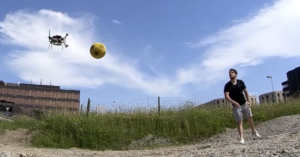
Researchers at the University of Zurich have created a custom drone that's so good at obstacle avoidance it can play dodgeball. The drone uses a special camera that allows it to react to incoming objects in just 3.5 milliseconds, about 10x faster than anything on the market today.

Photographer Chris Lee of pal2tech has created a much-requested follow-up to his technical breakdown of how ISO works when you take a picture. The followup uses Fuji cameras as an example to explain how the Extended Low, or "L", ISO setting on your camera functions.

Google wowed attendees at its I/O developer conference last week with a number of AI-powered photo technologies, including automatically colorizing black-and-white photos with one tap. But there's one impressive feature teased at last year's event that hasn't arrived yet: object removal.

The photojournalism industry has undergone seismic shifts over the past couple of decades with photography's move to digital and the rise of the smartphone camera. The business intelligence firm L2 recently sat down with veteran photojournalist Rick Smolan to chat about how tech has disrupted photography.

Researchers at Facebook and Tel Aviv University in Israel have teamed up to bring your selfies to "life." Using a single still photo of a person's face, their new technology is able to animate it and introduce different expressions.

Absolutely nothing?
Ten years ago, a Nikon D3 saved me while shooting a gig in a dimly lit club. It’s expansive ISO range of 200-6400 allowed me to shoot with a 24-70mm f/2.8 at about 1/20th of a second. Good enough for jazz as it was.
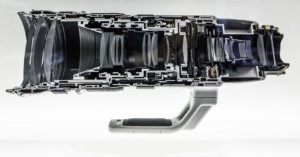
If you look at patents awarded as a measure of innovation, Canon is one of the most innovative companies on Earth. In 2016, Canon was granted the third most US patents of any company, beating out the likes of Intel, Microsoft, Apple, and even Google.

Want a digital camera battery that can be recharged in just seconds and power your shots for days? That dream maybe become a reality thanks to new advances in battery technology.
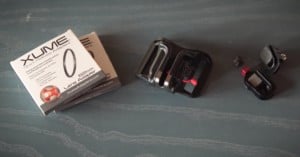
Traveling and photography go hand-in-hand, but without the right gear it can also be a pain. Fortunately, there's some great affordable travel photography accessories out there that will make traveling with a camera a joy.

Two of the most influential gadgets of all time, as declared a few days ago by TIME magazine, are cameras—two gadgets that "changed the course of technology for good." One of them even made the top 10.
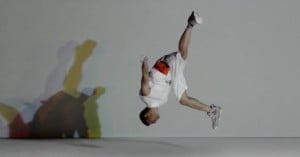
We won't waste time hemming and hawing: this is just plain cool. Using a patented technology, Satellite Lab can move a light source around an object at 10,000 feet per second while capturing that same object in super slow motion, creating an effect we'll call "bullet time 2.0".

Want to see what your camera looks like on the inside? FixYourCamera.org is a new teardown website that wants to show you.
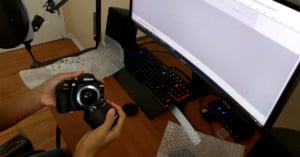
Update: It appears that the video has been taken offline. A relatively new YouTube tech channel named …

Camera apps these days already have the ability to analyze your scenes before you shoot them, but what if they could analyze your food before you eat it? That's what Google researchers are working on: they're trying to teach a computer to calculate calories from ordinary snapshots of food.

Scientists have created a self-powered camera that can take pictures indefinitely without any external power. Instead, it generates its own power using the light it captures with the sensor.

Project Ara is an ongoing effort by Google to create a modular smartphone for which you can swap critical components in and out, allowing users to build the perfect phone for their specific needs.
If its modular design takes over the consumer market in the future, we could be seeing a whole new approach to how smartphone cameras work.

Scientists at Google Research and Stanford University have teamed up to develop an artificial intelligence program designed to automatically produce captions based on the content of the image.
That's right, not just tags, full on captions like "A person riding a motorcycle on a dirt road."

Update: The company has responded to our request for comment and fixed the issue. See full update at the bottom.
Dick Smith is a leading tech retailer in both New Zealand and Australia, but as an anonymous reader showed us this morning, they might have goofed up in a big way in a recent ad they posted on their Dick Smith NZ Facebook page.
As you can see from the screenshot above, they seem to have 'appropriated' an iStock image as the background... without even taking the time to remove the watermark.

Instagram only just released Hyperlapse earlier this week, and already it’s amassed a cult-like following thanks to its dead-simple interface and amazing results.
But, as simple as the interface may be and as impressive as the results are, what happens between when the app is opened and the final hyperlapse actually involves a lot of incredibly technology at work.
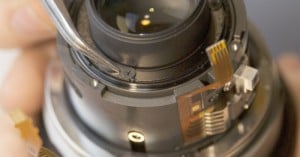
This is a geek article. Many of you don’t understand the term ‘geek’ properly, so perhaps this will help. As the graph below shows, if you aren’t both intelligent and obsessed with photo gear, you won’t enjoy this article.